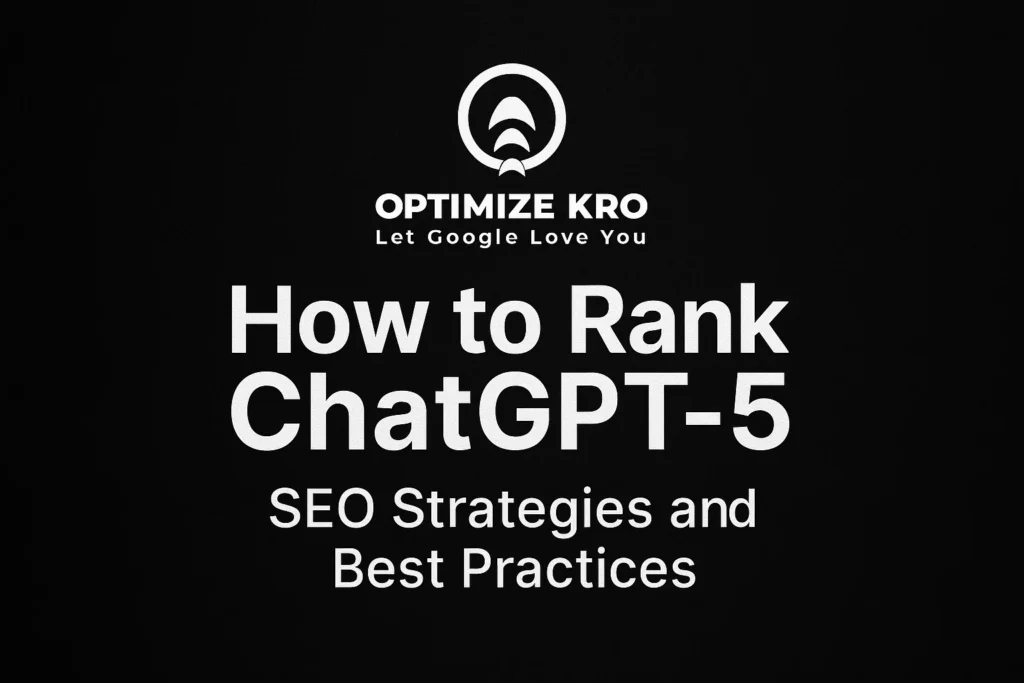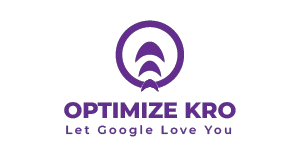With the rapid advancements in artificial intelligence, one of the most notable developments is the release of GPT-5 by OpenAI. As GPT models continue to improve, understanding how to rank them on search engines like Google and increase their visibility has become a crucial task for businesses, marketers, and content creators. Ranking GPT-5, or any AI-powered content, involves not only optimizing for search engines but also ensuring the content resonates with users and aligns with the principles of high-quality SEO.
- 1. Understanding the Basics of SEO
- 2. Content Quality: The Cornerstone of SEO for ChatGPT-5
- 3. Keyword Research and Optimization
- 4. Structuring the Content for Readability and SEO
- 5. On-Page SEO Best Practices for ChatGPT-5
- 6. Building Quality Backlinks
- 7. Technical SEO for AI-Generated Content
- What Our Clients Say
- 8. The Role of User Experience (UX) in Ranking GPT-5 Content
- 9. Monitoring and Analyzing Performance

This guide will walk you through the steps and strategies required to rank ChatGPT-5 effectively, focusing on key SEO practices such as content quality, keyword optimization, backlink building, and on-page SEO.
1. Understanding the Basics of SEO
Before diving into ranking strategies, it’s essential to understand the basics of SEO. SEO (Search Engine Optimization) involves optimizing web pages to rank higher on search engine result pages (SERPs). Search engines like Google use complex algorithms to rank content based on relevance, authority, and user experience.
For ranking AI-driven content like ChatGPT-5, SEO should focus on both traditional optimization tactics and those specific to the nature of AI-generated content. To achieve this, here are key factors to consider:
- Content Quality
- User Intent
- Relevance to Search Queries
- Backlinks
- Technical SEO
- On-Page Optimization
2. Content Quality: The Cornerstone of SEO for ChatGPT-5
Google’s E-A-T (Expertise, Authoritativeness, and Trustworthiness) guidelines are key to ranking high in search results. AI-generated content like ChatGPT-5 needs to demonstrate these principles:
- Expertise: The content should be accurate, credible, and sourced from reliable information.
- Authoritativeness: The AI should create content that showcases depth and expertise on a given topic, drawing from a wide range of quality resources.
- Trustworthiness: The content should be truthful, with clear citations and no misleading or harmful information.
To ensure high-quality content, GPT-5-generated content should:
- Be well-researched, pulling from authoritative sources.
- Offer originality and avoid plagiarism.
- Provide value to the reader, with useful, practical information.
- Be engaging, with a conversational yet professional tone.
3. Keyword Research and Optimization
Keyword research remains one of the most important SEO factors. For ChatGPT-5 content, keyword research should focus on finding both short-tail and long-tail keywords that the target audience is searching for.
- Short-tail keywords are broad, highly competitive terms like “AI content” or “GPT-5 ranking.”
- Long-tail keywords are more specific, lower-competition phrases like “how to rank GPT-5 content for SEO” or “best practices for optimizing GPT-5 articles.”
The process of keyword optimization includes:
- Identifying target keywords: Use tools like Google Keyword Planner, SEMrush, Ahrefs, and Ubersuggest to find relevant keywords.
- Optimizing title tags and meta descriptions: Include target keywords in these areas to help Google understand the content.
- Incorporating keywords naturally: Use the chosen keywords throughout the content in a way that reads naturally.
- Focus on LSI (Latent Semantic Indexing) keywords: LSI keywords are related terms that Google associates with your main keyword. Using LSI keywords boosts your content’s relevance.
4. Structuring the Content for Readability and SEO
Google values content that is easy to read and structured in a way that makes it digestible for users. When optimizing ChatGPT-5-generated content, ensure the following:
- Use clear headings and subheadings: Break up your content with H1, H2, and H3 tags that include your target keywords. This enhances readability and helps Google understand the structure of the page. Example:
- H1: How to Rank ChatGPT-5 on Search Engines
- H2: The Importance of Content Quality for GPT-5
- H3: Keyword Optimization for AI-generated Content
- Add multimedia: Include images, videos, infographics, or charts that enhance the content’s value. Google considers multimedia content as signals of quality and relevance.
- Write for the user: Your primary focus should always be on providing value to the reader. Write engaging, well-structured, and informative content that answers user queries.
5. On-Page SEO Best Practices for ChatGPT-5
On-page SEO involves optimizing the individual pages of your website to improve rankings. For GPT-5-generated content, these practices are essential:
- Title Tag Optimization: Include the target keyword in the title tag while keeping it within 60 characters. The title tag is one of the first things Google and users see, so make it catchy and informative. Example: “How to Rank ChatGPT-5: A Comprehensive SEO Guide”
- Meta Descriptions: Though meta descriptions don’t directly impact rankings, they do influence click-through rates (CTR). Include a clear description with relevant keywords, while keeping it under 160 characters.
- Internal Linking: Link to other pages within your website to improve crawlability and provide additional context for search engines. For ChatGPT-5 content, you can link to related blog posts, case studies, or tutorials.
- Optimize for Mobile: Ensure the website hosting GPT-5 content is mobile-friendly. Google prioritizes mobile-first indexing, meaning mobile-optimized content has an edge in rankings.
- Improve Content Load Speed: A slow-loading page can increase bounce rates, negatively impacting rankings. Use tools like Google PageSpeed Insights to identify ways to improve load times.
6. Building Quality Backlinks
Backlinks remain one of the most critical ranking factors. To rank ChatGPT-5 content, you need to attract high-quality backlinks from authoritative websites.
- Guest Posting: Write guest posts for relevant websites or blogs in your niche. Ensure that the content is high-quality and includes links back to your GPT-5 content.
- Skyscraper Technique: Identify high-ranking content on a similar topic, create even better content (using ChatGPT-5), and reach out to websites linking to the original piece, asking them to link to your improved version.
- Leverage Influencers and Industry Experts: Collaborate with influencers or thought leaders in your industry. A mention or link from them can drive traffic and increase your site’s authority.
- Create Shareable Content: Publish content that is valuable and share-worthy, such as infographics, detailed guides, or research reports. People are more likely to link to content that provides value.
7. Technical SEO for AI-Generated Content
Technical SEO involves optimizing the backend of your website to improve search engine crawlability and indexing. Some critical aspects to consider for ChatGPT-5 content include:
- XML Sitemap: Ensure your website has an updated XML sitemap that makes it easy for search engines to crawl your site.
- URL Structure: URLs should be short, descriptive, and contain your target keywords. For example, use “/how-to-rank-chatgpt-5” rather than “/page1”.
- Fix Broken Links: Regularly check for 404 errors or broken links on your website and fix them. Broken links can harm your rankings.
What Our Clients Say
Trusted by contractors and local businesses for proven Local SEO Services.
John M. – General Contractor
“These guys transformed my Google Maps ranking. More calls, more local leads, and better visibility!”
Sarah L. – Roofing Business
“Within 3 months, my business went from page 3 to the top 3 listings. Highly recommend their Local SEO service!”
David K. – Plumbing Services
“Affordable and effective SEO. My local service calls doubled in less than 90 days.”
8. The Role of User Experience (UX) in Ranking GPT-5 Content
Google uses metrics like Bounce Rate, Dwell Time, and Pages per Session to measure user engagement and satisfaction. For GPT-5 content, focusing on these aspects is vital.
- Improve Dwell Time: Ensure your content keeps users engaged by being informative, well-organized, and easy to read. Offering interactive elements, such as quizzes or calculators, can also help.
- Reduce Bounce Rate: A high bounce rate signals that users don’t find your content useful. To reduce this, ensure that your content aligns with user intent and expectations.
- Clear Navigation and Layout: A clean and easy-to-navigate website will improve user experience and encourage longer stays.
9. Monitoring and Analyzing Performance
SEO is an ongoing process, and monitoring the performance of your GPT-5 content is crucial. Use tools like Google Analytics and Google Search Console to track:
- Organic Traffic: Measure the traffic coming from search engines to your GPT-5 content.
- Keyword Rankings: Monitor where your target keywords are ranking over time.
- Bounce Rate and Engagement Metrics: Understand how users interact with your content, and adjust your strategy accordingly.
Conclusion
Ranking ChatGPT-5 content on search engines involves a blend of traditional SEO techniques and strategies that specifically cater to the nature of AI-generated material. By focusing on content quality, keyword optimization, on-page and technical SEO, and building quality backlinks, you can effectively improve the rankings of your GPT-5 content.
Remember that ranking is not an overnight process. SEO requires time and consistent effort. By following these strategies and continuously optimizing your content based on data insights, you can ensure your ChatGPT-5 content ranks high and attracts the right audience.
5

Gulfam Qamar is a seasoned Local SEO expert with a proven track record of helping businesses boost their online visibility and dominate local search results. With deep expertise in Google Business Profiles, on-page optimization, and local citation strategies, Gulfam helps brands connect with nearby customers and grow sustainably. When he’s not optimizing websites, he’s sharing actionable SEO tips and insights to empower small businesses in the digital space.

